Monday, September 23rd
Land Art - Journal Entry No. 8
11:07 am - Apache National Forest Campgrounds, New Mexico
Whenever you leave a meaningful place or special person behind, you often think of them while advancing towards your next destination. You consider certain events and interactions, analyzing those moments in an entirely different mindset. As a result, we’re able to dissect our thoughts with a new perspective and see the occasion for what it actually was. In films, this moment of clarity is often portrayed by a character’s gaze out the window of a moving vehicle, music playing to set the mood. Reflecting after these memorable periods is common, natural, and beneficial to appreciating them. Undoubtedly, you would expect this trip to provide many instants like this. However, at this moment, I’m not sure if my frequent reflection is as constructive as it could be. My mind has received an overload of stimulation since I landed in Salt Lake City over a week ago, and I’m beginning to find it difficult to organize my thoughts. I’m excited, inspired, and motivated while also being nervous, overwhelmed, and exhausted. We’re on the road for a long time, but we’re moving at a very quick pace. We have not settled in any given space for more than a night or two. So, it’s been troublesome to find the comfort of stagnation, a place to spend time to think about each location we’ve visited so far and conclude to what they each really mean.
Fortunately, our arrival in New Mexico promised a slightly longer stay. After a lengthy drive out of Arizona, we arrived at the Apache National Forest where, with the exception of one night, we would be camping over the next week. It’s a beautiful location that seems to encompass all of the positive attributes we enjoyed at some of our other campgrounds- isolation in the wooded mountains, yet 20 miles outside town in the event we may desire anything from civilization, a picnicking area, flowered grass, crisp smelling trees, and above all, a toilet (yes!). I’m also content in disclosing that at this point camping has become somewhat second nature, building a tent is a no brainer, and a burning fire is- to my great pleasure- always guaranteed. I am excited to spend the next week here, writing, reflecting and as usual, becoming more comfortable with nature, however that will be temporarily on pause. Tonight, I am sleeping elsewhere.
While mingling around the campfire last night, Alex and Matteo announced the groups that they had arranged to attend Walter de Maria’s famed Lightning Field. I was unaware of why only six of us could visit the field at a time, but I would soon find out. I was part of the first group to visit the Lightning Field along with San Francisco based photographer, Alexander Getty, and London based artists Sophia Starling, Tomas Downes, Yana Naidenov, and Luke Hart. I’m really excited. This trip will be entirely a surprise to me, as I have no idea what to expect. With the exception of Alex, I also haven’t really gotten to know any of the other artists I’m staying with tonight, which I’m sure will only add to the adventure. We shall shortly see. We’re set to drive into town in less than an hour.
5:32 pm- Walter de Maria’s Lightning Field, New Mexico
As Alex drove us through the Apache National Forest towards the small town of Quemado, we all laughed and shared mutual excitement over our next journey. Luke Hart had already been to the Lightning Field a year earlier, but from what he expressed, it was difficult to verbalize what we should anticipate. Once we made our way into Quemado, we stopped at the quaint Largo Cafe before heading over to the Dia office, where we were expected at exactly 2pm. Quemado is a very modest town comprised only of two motels, a gas station, two small restaurants, and a convenience store. It’s slightly odd in that both when we stopped here for gas last evening and mid-afternoon today there was virtually no one on the roads. Even the Dia office holds that same peculiarity subsisting of a large, old, white walled space with cracked wooden floors. There’s not much inside the office, but a ping pong table, desk, and a few scattered chairs. One small table supports a guest book where everyone who visits the Lightning Field signs their name and lists their thoughts on the piece. Together, we flipped through the pages of the book. Every single name had “Amazing!” or a synonym of the word written aside it. Luke flipped through to find his name written from 2012. Like all the other visitors, he had expressed the same sentiment: amazing.
A few minutes later, we were outside the Dia office loading our things into a dirt ridden jeep. Its driver, a friendly young man donning a white cowboy hat and shoulder length sandy blonde hair. As he drove us through rural New Mexico he told stories of his last visit to the Lightning Field, earlier this month. Not much before our Land Art trip began, the artist behind the Lightning Field, Walter de Maria, had passed away. The driver told us that many Dia employees made the trek out to Quemado to commemorate the artist at his most well known piece. During that period, they had seen lightening strike the field’s metal rods. To those like myself who had been unaware of the history of the work, this didn’t seem like it should’ve been a big deal. The group had sensed my confusion and explained that although the field was chosen for its location, lightening rarely struck the area in the time since de Maria’s installation had been constructed. Less than a handful of times has a visitor seen lightning at the lightning field. Consequently to the driver, seeing lightning strike the piece on the same night as the Dia Art Foundation chose to honor its artist was surreal. The foundation believed that de Maria was responding to their memorial of him and was joining them in spirit that night. As he continued to share his passion for de Maria’s work, I began to find the driver’s appreciation of the artist refreshing. Most, wouldn’t understand why someone would move to such an inactive area like Quemado only to assist an installation, but our driver believed de Maria’s work to be so compelling and inspiring that he was happy to drive a group of strangers to it seven days a week. His job here was vital to the success of the piece. As the road became less and less defined, and the surrounding area became increasingly barron, my expectations rose.What exactly was going to happen at the Lightning Field?
When we finally got to the Lightning Field, I was almost in disbelief of the setting that was to be our home for the next 24 hours: a small, whimsical looking log cabin sitting on a gigantic field covered in hundreds of metal rods. This is really living in isolation. There is absolutely nothing nearby- no neighbors or consumer amenities in sight. We quickly unloaded the van, walked into the little log cabin and fell in love with it immediately. Houses like this seemed only to appear in fairy tales of romantic getaways. It’s structure is basic, but there is beauty in simplicity. The entire home was made of oak wood. One of the first reactions came from Alex who was so stunned by what he saw that he quickly dropped all of his things and announced, “I need to photograph all of this. Like, right now.” In a matter of seconds, he had his tripod set up, making sure everything was set in place to photograph perfectly. I was almost just as amused by the house and walked around exploring everything. There was an adorable little kitchen with a neatly stocked refrigerator maintaining tonight’s dinner, a prepared enchilada, and tomorrow’s breakfast: eggs, bacon and orange juice. Through the kitchen door was a an open living and dining area. The dining area contained a wooden table, already set for six. Light poured onto it from the overlooking window and created an artistic looking grid shape upon it. It allowed for the bowl of shiny red apples decorating its center to sparkle, the only glimmer of color in the entire room. Further into the space was a vintage style furnace with chairs strategically scattered about, an inviting setting to sit and relax as a group. Walking a bit further led to a wooden deck that overlooked the massive field. It held two benches and a rocking chair, again a welcoming area for all of us to gather.
The other rooms in the house were just as charming. To right of the living room was the only bedroom to overlook the Lightning Field. It contained a full size wooden bed made in delicate white covers, obviously romantic and set to accommodate the group’s couple, Luke and Yana. Opposing the loveliness found in all the other rooms, was a large hall in the center of the house that looked like it came straight out of an Alfred Hitchcock film; it had no windows or any regalia for that matter aside from a white spiral cord phone with a small note attached to it. The note advised the visitor to dial *67 (making the call anonymous) before calling and to only reach out in the event of an emergency. It was the strangest and least appealing space in the house, but I’m positive that was its point. The Lightning Field was all about isolation and being able to contact the outside world would have ruined that. Through that room, was the bedroom I chose to sleep in that night. It had two twin beds with dreamy white sheets laid on them; at the foot of each was a thick, red wool Navajo printed blanket, again the only pop of color in a neutral, monochrome space. In the far corner of the room was an antique wooden, desk with an old hunter green lamp placed on top of it. This was the desk I had been yearning to write on this entire trip, and so I quickly rushed over to it and set my Polaroid camera and Moleskine neatly beside the lamp. It was a room I was excited to inhabit and weirdly, couldn’t wait until I would be able to sleep in it.
After I set my things down, I decided to finally venture outside to view what we were here to see- the lightning field. Yet, I already felt so inspired and intrigued in the short time that we’d been there. The rocking chair on the porch also looked so incredibly appealing. So, now I sit here, writing in my notebook in the warmth of New Mexico’s September sun. In the distance, I can see Yana walking through the field. As I write this, she seems to advance farther and farther away until finally, I can no longer see her. Where did she go? How deep is this field? It’s now captured my immediate curiosity. I need to put my notebook down and find out.
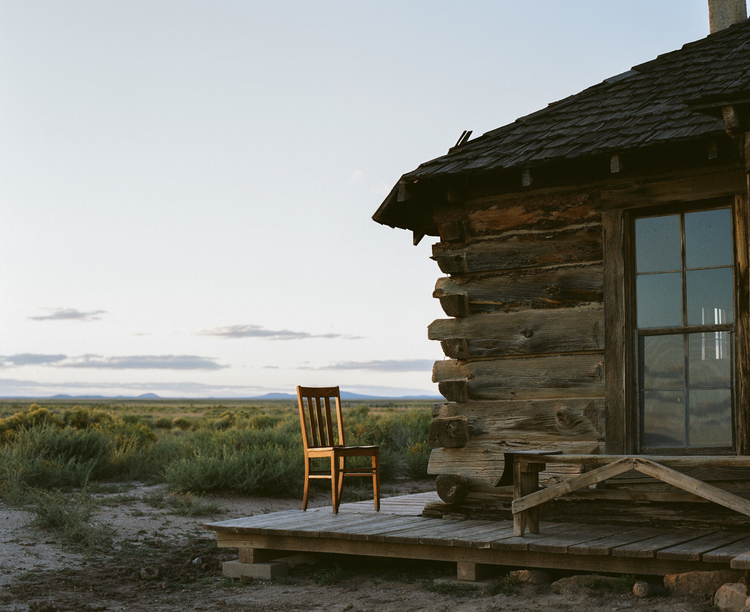
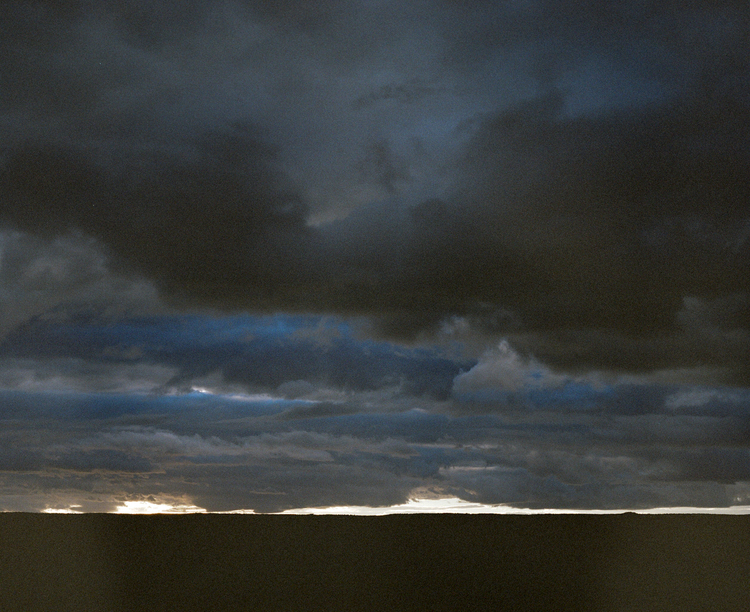
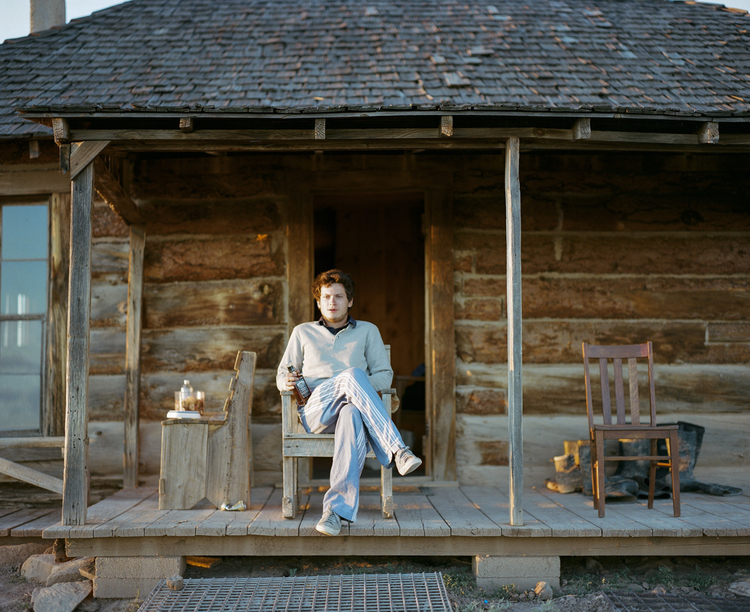
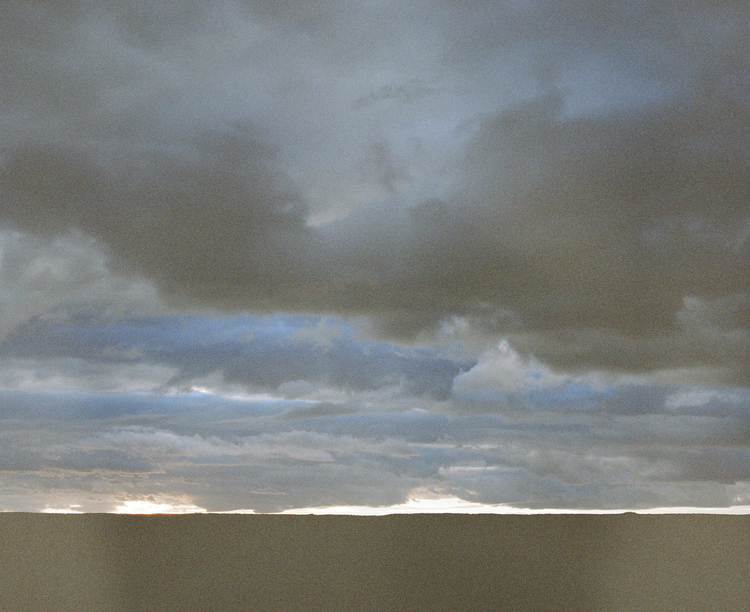
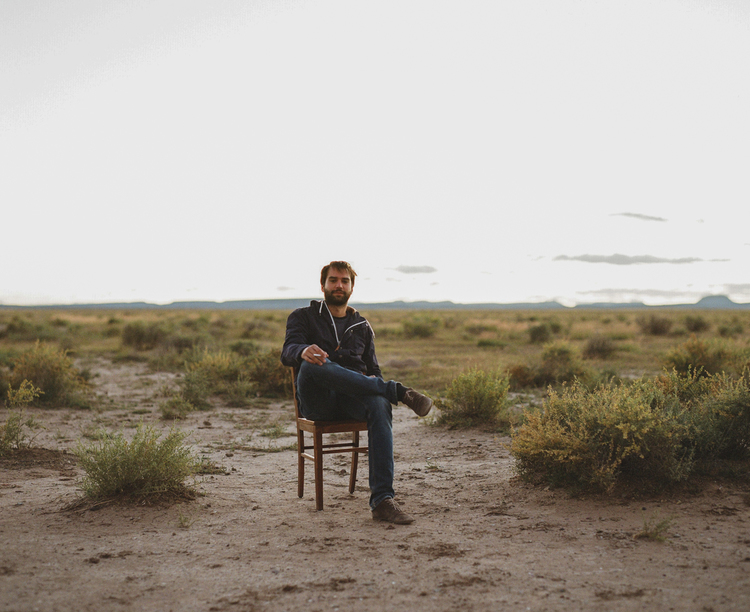
- - - - - - - - - - - - - - - - - -
Photography Credit: Rosanna Bach
Rosanna Bach photographer, writer, and storyteller was born in Switzerland in 1990. She completed a BBA in Design Management at Parsons the New School for Design in 2012. After completing her degree, Rosanna moved to Buenos Aires, Argentina where she lived for five months working on a personal project, "Fear Builds Walls." As a result she is fluent in English, Spanish and German. In 2013 Rosanna graduated from the Documentary and Photojournalism program at the International Centre of Photography. She now lives and works in New York City.
Originally published on Promote & Preserve.